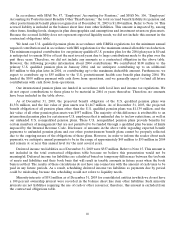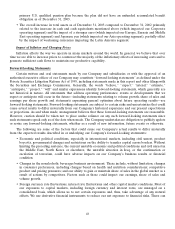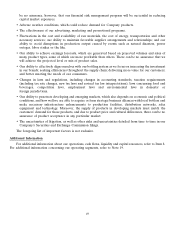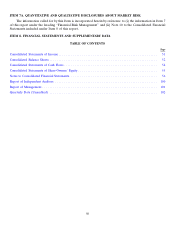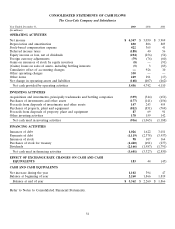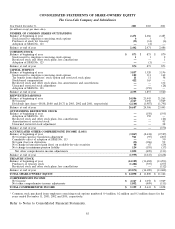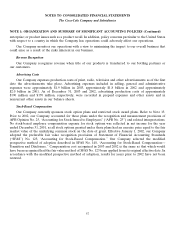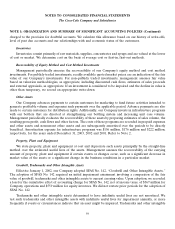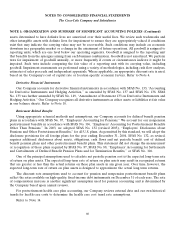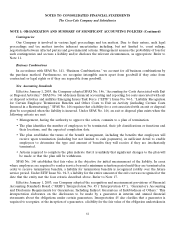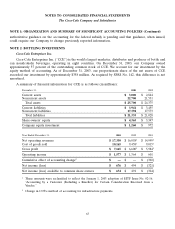Coca Cola 2003 Annual Report Download - page 59
Download and view the complete annual report
Please find page 59 of the 2003 Coca Cola annual report below. You can navigate through the pages in the report by either clicking on the pages listed below, or by using the keyword search tool below to find specific information within the annual report.NOTES TO CONSOLIDATED FINANCIAL STATEMENTS
The Coca-Cola Company and Subsidiaries
NOTE 1: ORGANIZATION AND SUMMARY OF SIGNIFICANT ACCOUNTING POLICIES
Organization
The Coca-Cola Company is predominantly a manufacturer, distributor and marketer of nonalcoholic
beverage concentrates and syrups. In these notes, the terms ‘‘Company,’’ ‘‘we,’’ ‘‘us’’ or ‘‘our’’ mean The
Coca-Cola Company and all subsidiaries included in the consolidated financial statements. Operating in more
than 200 countries worldwide, we primarily sell our concentrates and syrups, as well as some finished beverages,
to bottling and canning operations, distributors, fountain wholesalers and fountain retailers. We also market and
distribute juices and juice drinks, sports drinks, water products, teas, coffees and other beverage products.
Additionally, we have ownership interests in numerous bottling and canning operations. Significant markets for
our products exist in all the world’s geographic regions.
Basis of Presentation and Consolidation
Our consolidated financial statements are prepared in accordance with accounting principles generally
accepted in the United States. Our Company consolidates all entities that we control by ownership of a majority
voting interest. Refer to heading ‘‘New Accounting Standards’’ for a discussion of variable interest entities.
We use the equity method to account for our investments for which we have the ability to exercise
significant influence over operating and financial policies. Consolidated net income includes our Company’s
share of the net earnings of these companies. The difference between consolidation and the equity method
impacts certain financial ratios because of the presentation of the detailed line items reported in the financial
statements.
We use the cost method to account for our investments in companies that we do not control and for which
we do not have the ability to exercise significant influence over operating and financial policies. In accordance
with the cost method, these investments are recorded at cost or fair value, as appropriate.
We eliminate from our financial results all significant intercompany transactions, including the
intercompany portion of transactions with equity method investees.
Certain amounts in the prior years’ financial statements have been reclassified to conform to the
current-year presentation.
Use of Estimates and Assumptions
The preparation of our financial statements requires us to make estimates and assumptions that affect the
reported amounts of assets, liabilities, revenues and expenses and the disclosure of contingent assets and
liabilities in our financial statements and accompanying notes. Although these estimates are based on our
knowledge of current events and actions we may undertake in the future, actual results may ultimately differ
from estimates and assumptions.
Risks and Uncertainties
The Company’s operations, at times, could be adversely affected by restrictions on imports and exports and
sources of supply; a prolonged labor strike; duties or tariffs; changes in governmental regulations; the
introduction of additional measures to control inflation; changes in the rate or method of taxation; the
imposition of additional restrictions on currency conversion and remittances abroad; the expropriation of private
56


